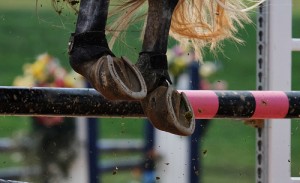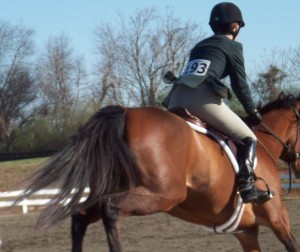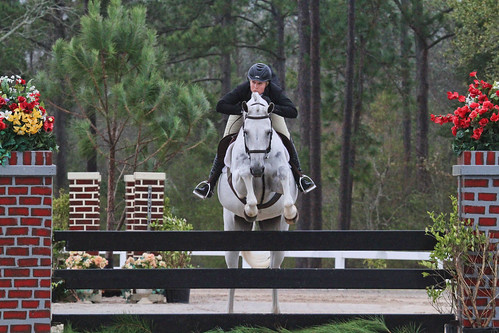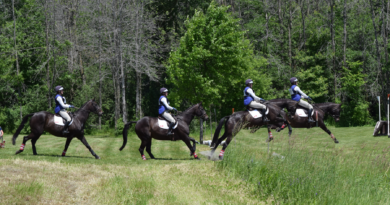What the Judge is Looking For – Knock Downs
Well, the hunter judge is not looking for a knockdown and if there is one it is scored as a major error.
What is a Knock Down
A jump is considered to have been knocked down when the height of the jump is lowered by the horse or rider. It is quite clear that when the top rail is hit by the horse’s legs and comes down, it is considered a knock down. The pole usually pops right out of the jump cups and falls to the ground. If the rail falls as a result of the rider hitting the pole or the jump standard it is still considered a knockdown. This means if the rider’s foot comes in contact with the wing of the jump and causes the jump to fall, even though the horse doesn’t hit the rail, it is scored as a knockdown.
Knockdowns are not created equally! If the knockdown is a result of poor form this will be duely noted. Hanging legs, knees not up, ‘swimming’, and leaving ‘off of one leg’ are considered poor form and addition to having a knockdown the poor form will be marked on the judges card. A horse with good form having a ‘lazy rail’ will have a more favorable score than a horse with poor form bashing a rail out with it’s knees.

As a hunter competitor it is important to take note if the knockdown occurs with a front leg or a hind leg. It is considered a worse fault if the horse knocks down the jump with a front leg versus a hind leg. This comes back to the field hunter days when the obstacles were solid and hitting a solid fence with a front hoof may result in a bad fall. Hitting a rail with a trailing hind leg would be considered a lesser fault.
A knockdown is considered a major error and will be scored as a major error. In addition to noting

which leg the horse knocked the fence down with judges will give them a score to ensure that they place below horses that have completed the round successfully without any major errors.
Do Rubs Count
Rubs and touches are noted by the judge but are not considered a major error and are not scored as a knockdown. In some cases however, significant rubs are duely noted and could cause a winning round, in good company, to lose a winning position. Competitors should understand that a soft rub with a hind leg is a less severe than a hard rub with a front hoof. In order from ‘worst’ to ‘least’ touches with:
- front leg as a result of poor jumping style
- front leg as a result of poor placement to the fence (too deep or too far out)
- back leg as a result of poor jumping style
- back leg as a result of a bad take off spot.
When judging I note, on my card, hard rubs with a front leg as F. Light rubs are noted with an f. Back leg rubs are noted with B – for hard rubs and b – for light rubs. This way at a glance I can see if it is a front or back leg that has hit the jump and also note a U for on the way up and D for on the way down.
Rubs will count in good company and will be placed below horses that have no major errors.


